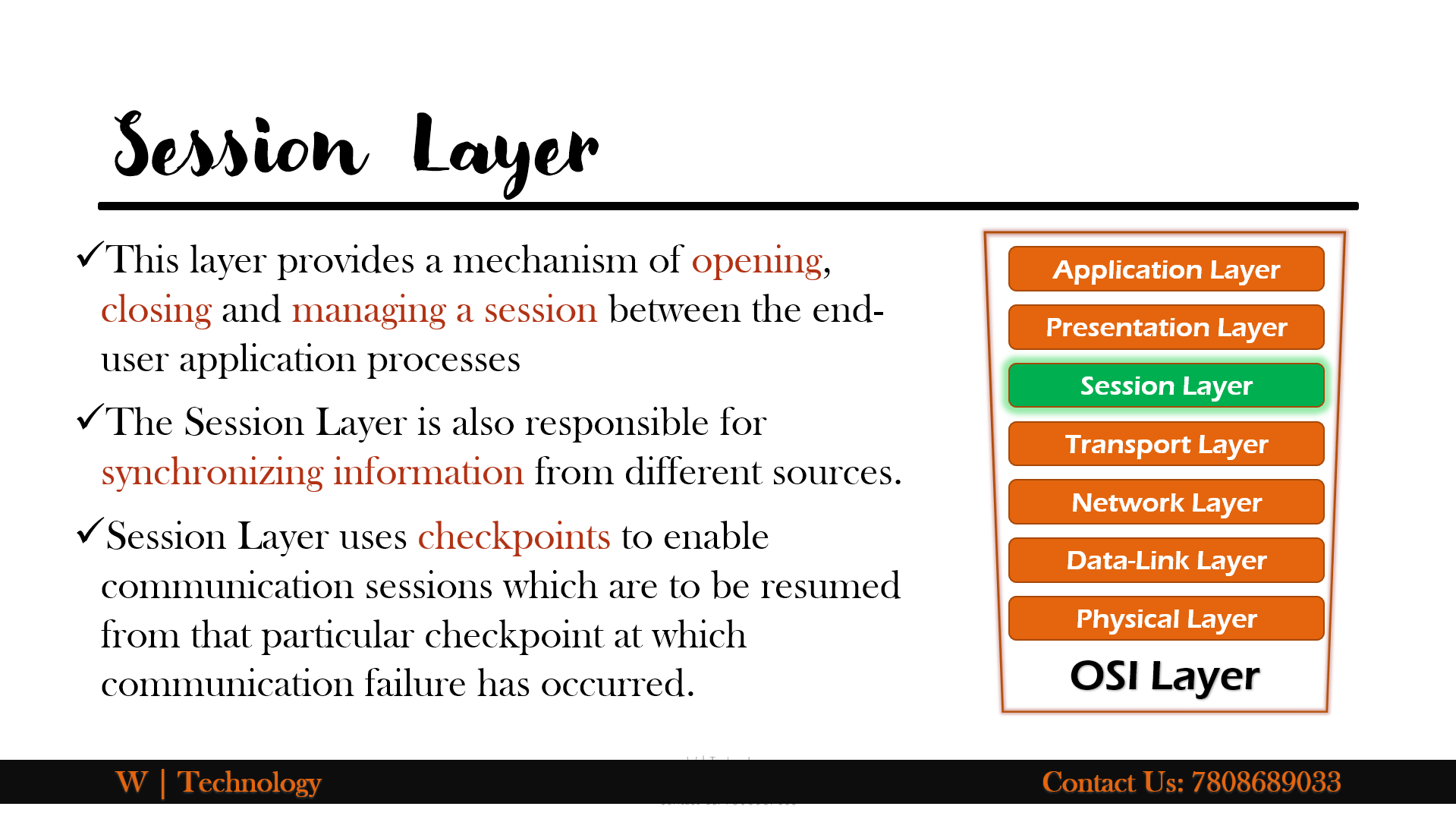The Session Layer of the OSI Model: Unraveling Communication
The Session Layer
Position in the OSI Model: Layer 5
The session layer, also known as Layer 5, plays a crucial role in managing, establishing, maintaining, and terminating sessions or connections between applications. It acts as the bridge between the Presentation Layer (Layer 6) and the Transport Layer (Layer 4), ensuring reliable communication.
Key Functions:
-
Dialog Control: The Session Layer establishes, maintains, and synchronizes communication sessions, allowing data exchange between applications.
-
Token Management: It manages tokens, which control access to the session, preventing conflicts when multiple applications attempt to communicate simultaneously.
-
Synchronization: The Session Layer ensures synchronization by placing checkpoints in the data stream, allowing recovery from errors without retransmitting the entire message.
Protocols at the Session Layer
While the Session Layer doesn't have specific protocols unique to it, the protocols employed at this layer are often associated with application-level protocols. Here are some notable examples:
-
NetBIOS (Network Basic Input/Output System):
- Purpose: Originally designed by IBM, NetBIOS facilitates communication between applications running on different computers within a local network.
- Example: Windows file and printer sharing often leverage NetBIOS for communication.
-
RPC (Remote Procedure Call):
- Purpose: RPC enables programs to execute procedures or code on a remote server as if they were local, supporting distributed computing.
- Example: DCOM (Distributed Component Object Model) relies on RPC for inter-process communication.
-
PPTP (Point-to-Point Tunneling Protocol):
- Purpose: PPTP establishes virtual private networks (VPNs) over the internet, enabling secure data transmission.
- Example: Remote users connecting to a corporate network over the internet.
Real-world Example: Web Conferencing
Let's explore how the Session Layer functions in the context of web conferencing, a prevalent application in today's digital landscape.
-
Session Establishment:
- When users initiate a web conference, the Session Layer facilitates the establishment of a virtual meeting space, ensuring that participants can communicate seamlessly.
-
Dialog Control:
- Throughout the web conference, the Session Layer manages the dialog between participants. It establishes rules for turn-taking, ensuring orderly communication.
-
Token Management:
- In scenarios where participants need to present or share screens, the Session Layer may employ token management to regulate access, preventing conflicts and ensuring a smooth presentation flow.
-
Synchronization:
- If network issues or disruptions occur during the web conference, the Session Layer's synchronization capabilities help in recovering from errors without disrupting the entire session.
Conclusion
In the intricate tapestry of the OSI model, the Session Layer serves as a linchpin, orchestrating communication sessions between applications. Its role in managing dialog, tokens, and synchronization ensures the reliability and orderliness of data exchange. While specific protocols at this layer may vary, their overarching purpose remains the facilitation of seamless communication. Understanding the Session Layer provides valuable insights into the dynamics of networking, enhancing our comprehension of the digital world's interconnected web.












0 Comments